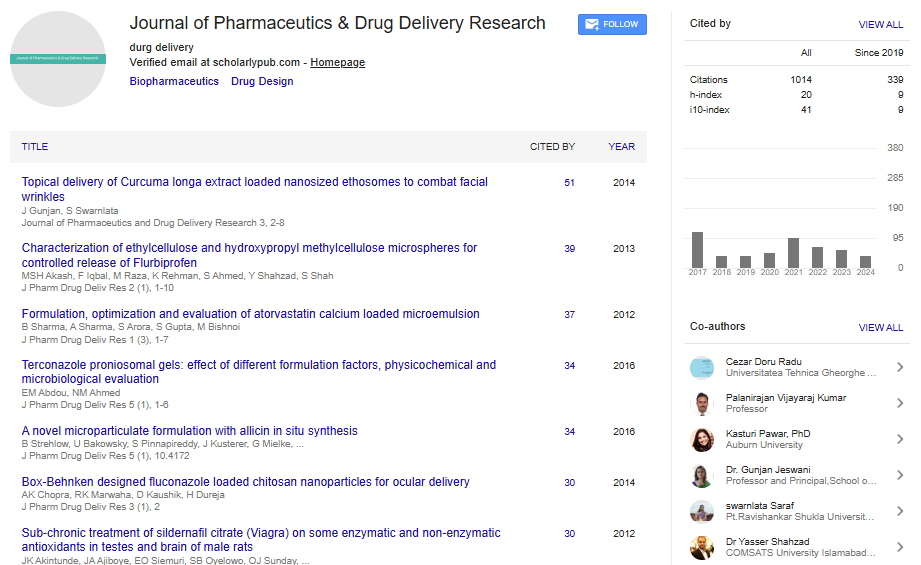Biodegradable in situ forming hydrogel for intraocular drug delivery
Abdullah Abubakre
Catalent Pharma Solutions, Canada
: J Pharm Drug Deliv Res
Abstract
The aim of this study was to synthesize a delivery system that is both biodegradable and biocompatible, and that which will prolong the release of therapeutic protein in the vitreous humour, using Infliximab as the drug sample of choice. A biodegradable in situ forming hydrogel designed to sustain the release of therapeutic proteins in the posterior chamber of the eye was formulated. Hyaluronic acid (HA) was derivatised with acryl group and it was used as the crosslinker in the synthesis of the gels. These gels were synthesised by crosslinking 2.0 mg, 4.0 mg, 7.0 mg, and 10.0 mg of the acrylated hyaluronic acid (Ac-HA) with PNIPAAM polymer. The thermoresponsive, injectability, and swelling characteristics were determined for the four gels. It was observed that the higher the amount of crosslinker, the less thermoresponsive the gels became. Swelling properties also decreased significantly (p < 0.05) with increasing amounts of crosslinkers. In vitro release studies with entrapped infliximab from gels prepared from 2.0 mg and 4.0 mg crosslinkers was investigated using the PK-Eye in vitro model. The percentage drug release after 10 days from the gels with 2.0 and 4.0 mg crosslinkers were 94.0% ± 1.9 and 24.5% ± 3.0, respectively. The gels also displayed impressive biodegradability profiles in the presence of hyaluronidase, with >93.0% and >39.0% weight loss recorded for gels with 2.0 and 4.0 mg crosslinkers, respectively after 7 days. These promising results confirm that a biodegradable and biocompatible gel of PNIPAAM crosslinked with Ac-HA that can potentially be tailored to sustain the release of therapeutic proteins in the posterior segment of the eye is feasible.
 Spanish
Spanish  Chinese
Chinese  Russian
Russian  German
German  French
French  Japanese
Japanese  Portuguese
Portuguese  Hindi
Hindi 
